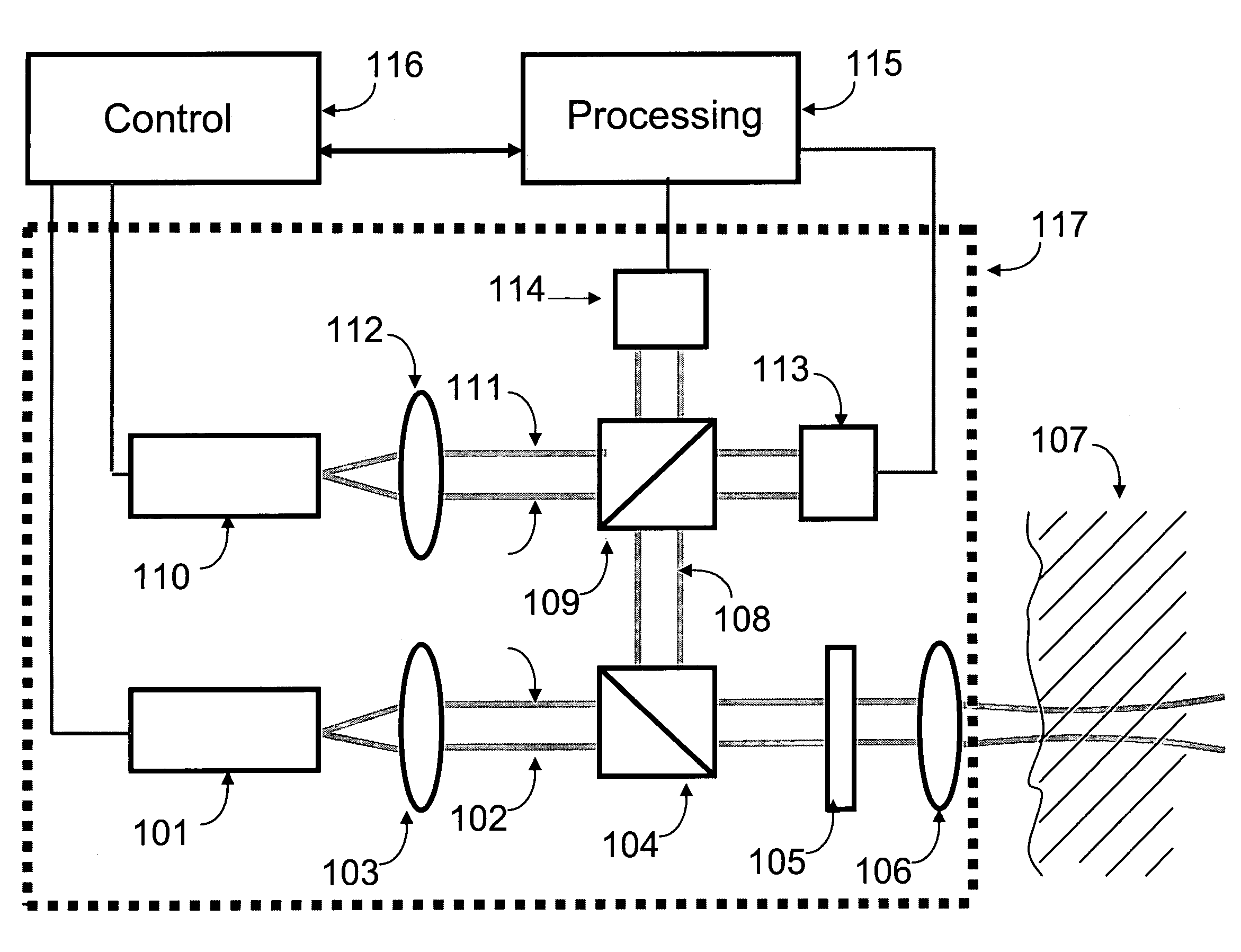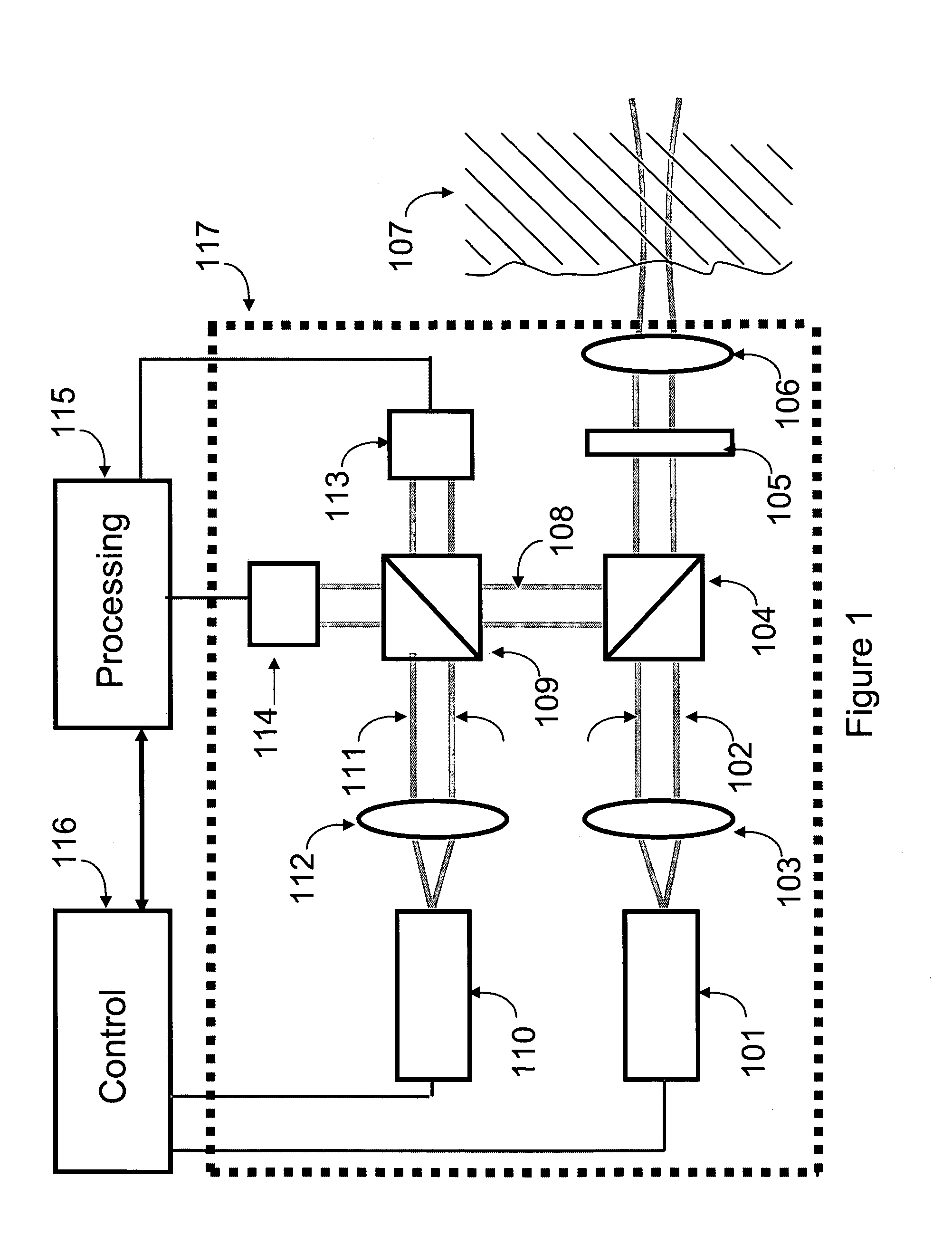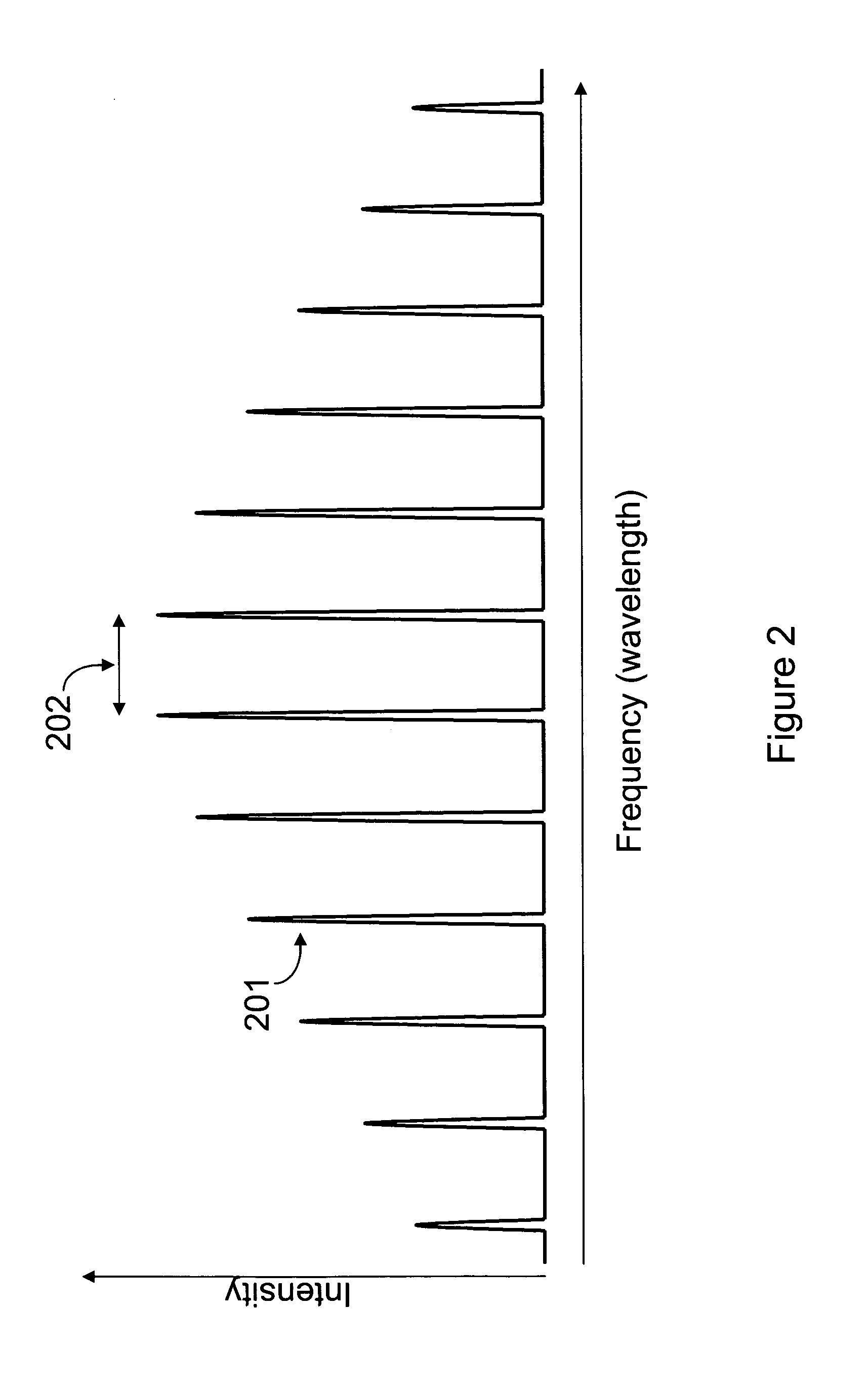Non-invasive analysis system
a technology of optical analysis and analysis system, which is applied in the field of quantitative analysis of analytes, can solve the problems of inability to accurately de-convolute the required measurement, the technique is vulnerable to inaccuracy, and the risk of infection, etc., to achieve the effect of de-convolving the required measurement, and requiring considerable processing
- Summary
- Abstract
- Description
- Claims
- Application Information
AI Technical Summary
Problems solved by technology
Method used
Image
Examples
Embodiment Construction
[0016]Conventional optical coherence tomography is based on a source having a broad band of incoherent wavelengths, with the problems and limitations described above. An alternative approach, which addresses these problems and limitations, is to use a source having a broad set of discrete coherent wavelengths. A preferred embodiment of this invention is illustrated in and described with reference to FIG. 1 where a non-invasive optical analysis system is shown.
[0017]The system described in this preferred embodiment is designed to analyze the characteristics of analytes, in particular, the concentration of glucose in human tissue. The system includes a first electronically pumped and mode-locked laser diode 1011, whose output 102, herein referred to as a repetitive discrete coherent optical signal or “probe signal”, consists of a broad band set of wavelengths or modes that have a repetitive phase relationship with each other. The repetitive discrete coherent optical signal or “probe s...
PUM
 Login to View More
Login to View More Abstract
Description
Claims
Application Information
 Login to View More
Login to View More - R&D
- Intellectual Property
- Life Sciences
- Materials
- Tech Scout
- Unparalleled Data Quality
- Higher Quality Content
- 60% Fewer Hallucinations
Browse by: Latest US Patents, China's latest patents, Technical Efficacy Thesaurus, Application Domain, Technology Topic, Popular Technical Reports.
© 2025 PatSnap. All rights reserved.Legal|Privacy policy|Modern Slavery Act Transparency Statement|Sitemap|About US| Contact US: help@patsnap.com



